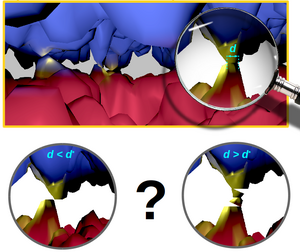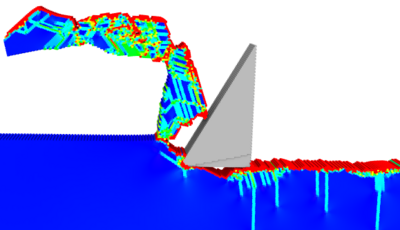

Every material surface experiences wear during mechanical contact. Wear comes in different, i.e. adhesive, abrasive, fretting, corrosive, etc. form. Despite a long history of inquiries into the subject, mechanisms of wear are poorly understood. Our recent numerical development enabled a direct modeling of material removal processes, paving the way for fundamental investigations of wear mechanisms. Specifically, this research try to understand the physical origins of empirically-observed engineering wear relations and developed new mechanistic-based wear models. The long-standing quest for physics-based simulations of wear debris formation has been recently addressed through a coarse-grained atomistic approach. These simulations demonstrated two adhesive wear mechanisms: gradual asperity smoothening by plastic deformation versus fracture-induced debris formation. Examining a range of simulation parameters, we found that the size of the asperity contact junction and the strength of the adhesive bond dictate the adhesive wear mechanism. Ultimately, hard/brittle materials with large asperities and strong adhesive bonding at the asperity contact junctions favour the debris formation mechanism over the asperity smoothening mechanism.

Machining, the process of cutting materials into a desired shape and size by controlled material-removal processes, has application in most industries, ranging from miniaturized biomedical and electronic ones to large-scale metals and composites manufacturers. Here we try to optimize the process of cutting for various combination of substrate and tool materials using computer simulations. We investigate a wide range of parameters including loading condition, tool geometry, and coating properties. This research aims to provide a scientific foundation for revisiting empirical knowledge about cutting processes and for reducing the material wastage due to tool wear and failure. We also analyze the state of wear in cutting tools. Three possible scenarios leading to excessive wear will be investigated; i) delamination of the coating from the tool, ii) fracture in the coating due to contact stresses, and iii) fracture of the tool at the tip. This will provide input to improve the coating performance by synthesizing coatings with optimal material and process properties (fracture toughness, hardness, elastic modulus, adhesion etc.)